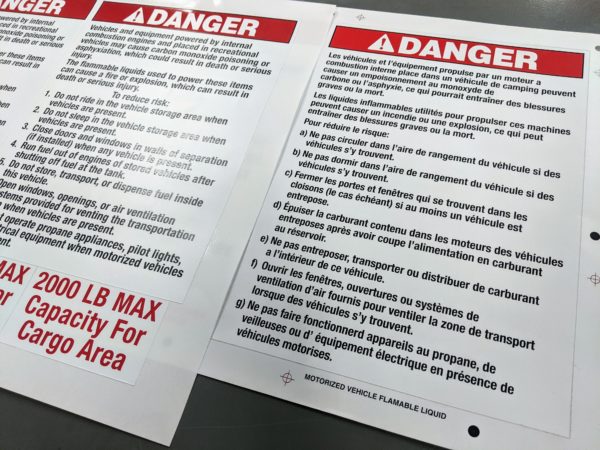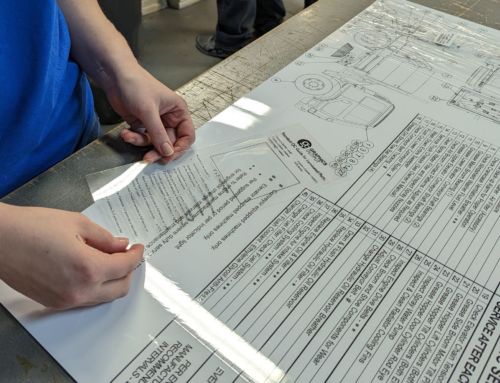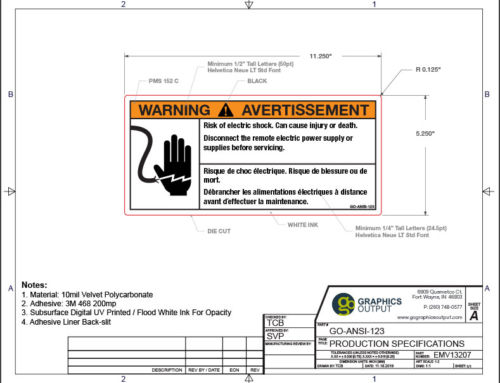Between globalization happening at a breakneck pace and the need to assure we are being inclusive and equitable, more and more companies are recognizing the importance of multilingual graphics. Oftentimes, our customers want to know if and when they should be using multilingual warnings. The answer depends on where the end-products will be sold.
Products Sold in the US
Multilingual signs or labels are not required in the United States, as determined by the federal government and American National Standard Institute (ANSI), the leading body on the standards for safety signs and warning labels. ANSI-compliant graphics, instead, concern certain colors, words, and symbols. No current ANSI standards or U.S. federal codes or regulations require multiple languages on any safety signage or labels
That being said, companies may—and often should—choose to print labels in multiple languages. Multilingual instructions are important for users who don’t speak English or speak English as their second language. Translations in the necessary language(s) keep multilingual or non-English speaking users informed and safe. If your product is likely to be purchased or used in an area with a large prevalence of non-English speakers, adding a translation or two is a great idea.
Symbols and Pictograms
Another option is to add symbols, also referred to as pictograms. These images improve comprehension across language and literacy barriers. ANSI has a handy list of recommended safety symbols. They also deem any safety symbol acceptable if the symbol can be correctly identified at least 85% of the time with little to no “critical confusion.” This occurs when the conveyed message is the opposite of the intended message.

This label uses a symbol depicting a hand getting shocked by a live wire to clearly warn of shock risk. It also is multilingual, in both English and French.
What about other countries?
If you are a predominantly English-language company that wants to sell products in other countries, be prepared to use multilingual instructions, labels, and packaging. Many local governments require all safety information to be provided in the local language.

These danger labels, featured on an RV that is sold throughout the US and Canada, say the same thing in English and in French.
Consider, Quebec, Canada, where all labeling must be in French, according to Quebec’s Act Respecting Occupational Health and Safety, which states, “The label, sign and safety data sheet concerning a hazardous product must be in French. The French text may be accompanied with one or several translations.” Plus, the French verbiage must have equal or greater prominence over any other language featured, according to Quebec’s Charter of the French Language.
Canadian territories and provinces outside of Quebec usually require some sort of bilingual French/English labeling, with limited exceptions. However, labels in Mexico can include the Spanish translation only, without any English. Always check with your desired selling location’s regulations on monolingual and multilingual labels before you begin production.
Is it time to update your current safety designs to be more inclusive? Graphics Output is happy to help. Request a quote online, shoot us an email, or call 260-748-0577.




